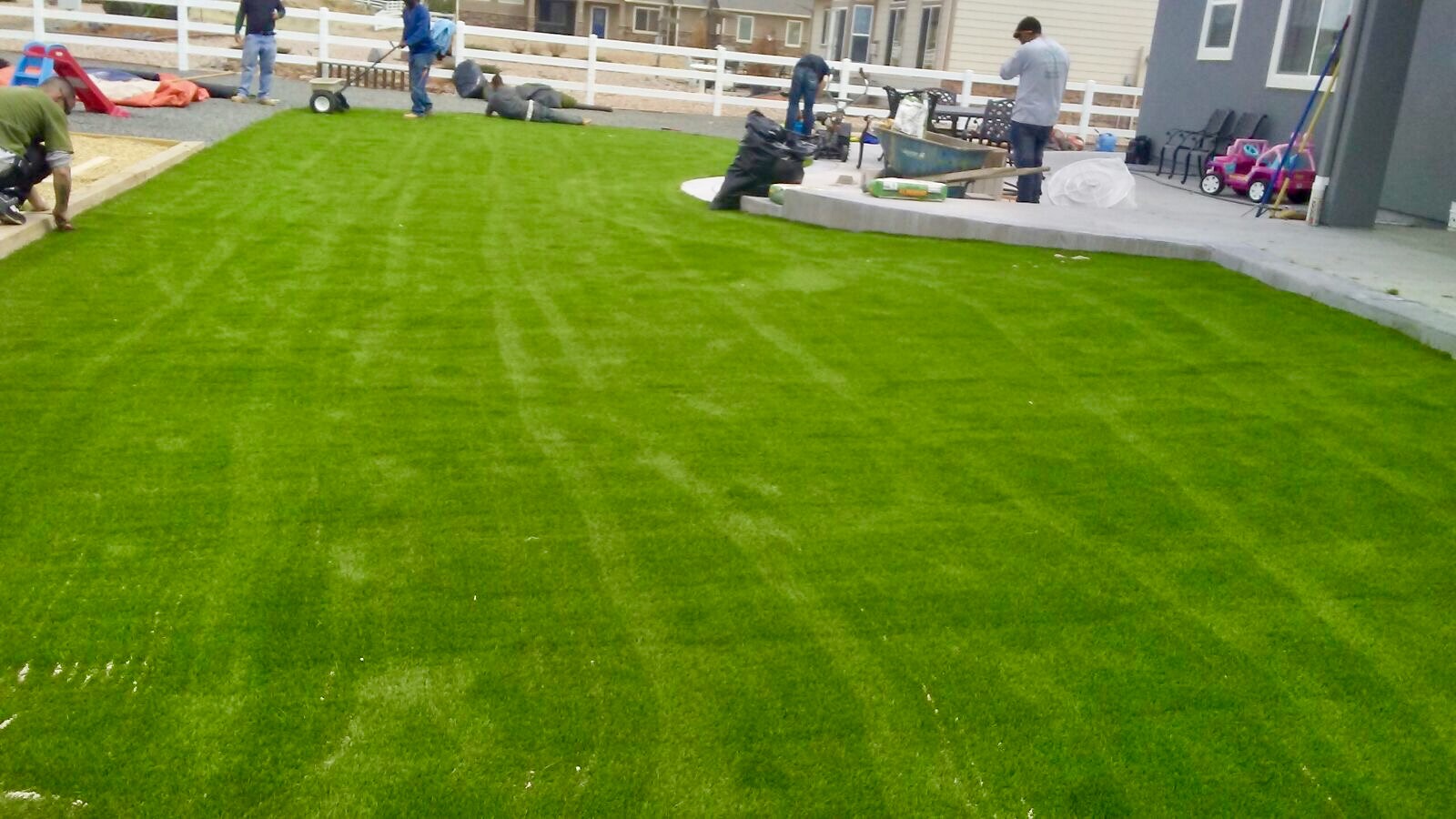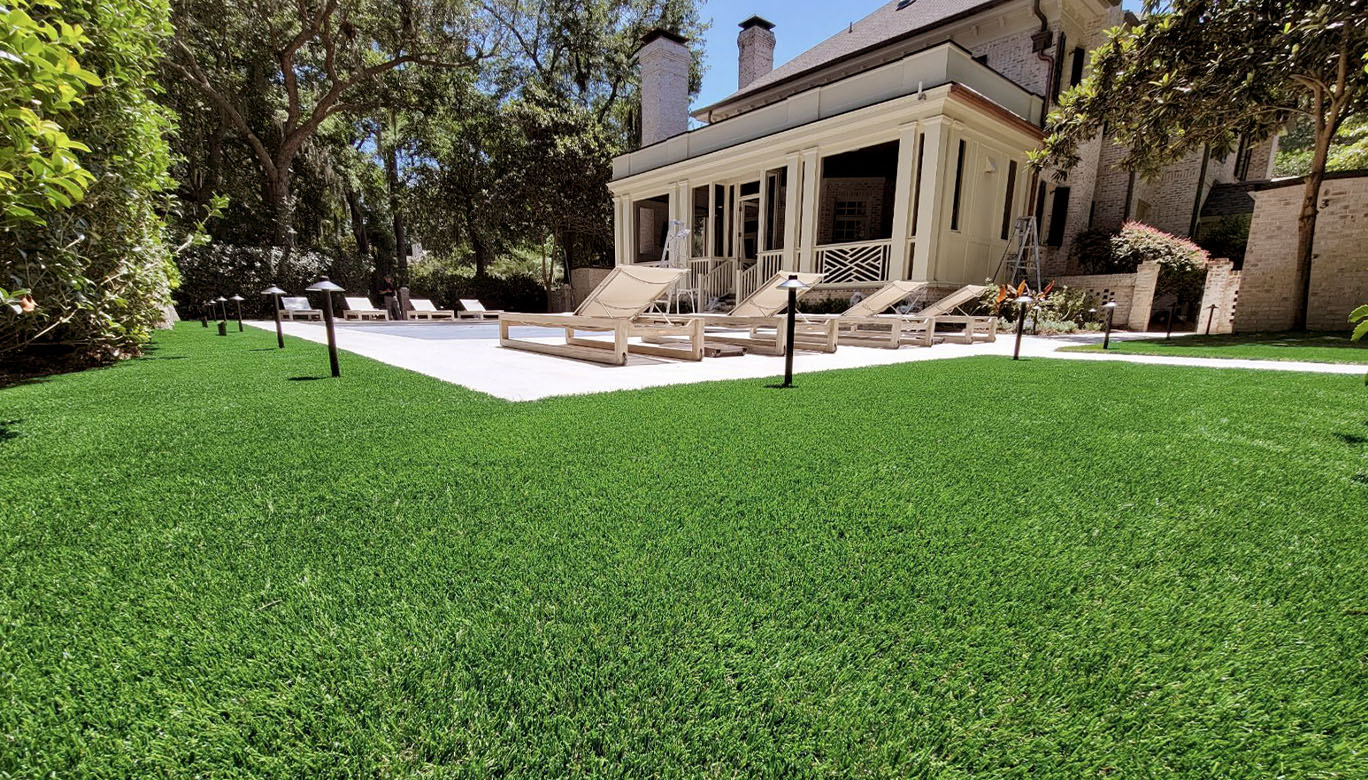Delve Into the Environmental Perks of Opting for Synthetic Grass Solutions
The adoption of synthetic grass remedies presents an engaging opportunity to attend to pushing environmental obstacles. By considerably reducing water usage and minimizing the application of hazardous chemicals, these alternatives not just promote lasting landscape design yet also shield local environments. Furthermore, the reduced carbon impact related to lowered upkeep tasks adds to a much more lasting technique to land administration. However, the ramifications of these advantages extend past mere preservation initiatives, elevating concerns regarding their lasting effect on habitat conservation and overall ecological balance. Checking out these measurements exposes a complex interplay worth thinking about.
Water Preservation Advantages
Among one of the most substantial benefits of synthetic grass is its ability to preserve water. Conventional lawn lawns call for substantial watering, specifically in areas susceptible to dry spell or water limitations. In comparison, artificial grass does not require watering, significantly lowering the total need for water sources. This attribute is particularly valuable in dry regions where water scarcity is a pressing problem.
By getting rid of the demand for normal watering, synthetic grass adds to sustainable landscape techniques and aids reduce the environmental impact of extreme water usage. The conservation of water expands to the reduction of runoff, which can lead to soil erosion and river contamination.
Furthermore, the installation of fabricated turf allows home owners and districts to designate water resources more effectively, concentrating on necessary uses such as alcohol consumption water and agriculture. The shift towards artificial lawn not only promotes responsible water usage but additionally aligns with more comprehensive environmental goals focused on protecting natural deposits.
As neighborhoods increasingly prioritize sustainability, the water preservation benefits of man-made grass offer an engaging case for its adoption in household and commercial landscape design tasks.
Decreased Chemical Usage
The change to man-made lawn considerably reduces the reliance on chemical therapies typically utilized in natural turf maintenance. Standard lawn management commonly includes the application of herbicides, pesticides, and plant foods to advertise development and control pests. These chemicals can posture threats to human health, regional wild animals, and the atmosphere, adding to soil and water contamination.
In contrast, artificial turf eliminates the need for these unsafe materials. Once installed, it requires marginal upkeep, largely including regular cleaning and irregular infill replenishment. This reduction in chemical usage not just profits the prompt atmosphere however additionally contributes to broader eco-friendly security. By reducing the release of artificial substances into the environment, synthetic lawn advertises healthier dirt and water supply.
In addition, the lack of chemical drainage connected with synthetic grass installments helps secure neighborhood rivers from pollution, sustaining water life and preserving biodiversity. Arizona artificial turf. As communities significantly prioritize lasting techniques, selecting artificial grass presents a feasible option that aligns with environmental conservation goals. Through this change, homeowner can delight in lush eco-friendly spaces without compromising environmental health, leading the way for a more sustainable future
Reduced Carbon Impact

In addition, the setup check of fabricated turf can result in substantial water preservation. Natural yards call for considerable amounts of water for watering, which not just contributes to the carbon footprint connected with water extraction and treatment yet also pressures local water sources. In contrast, fabricated lawn requires minimal upkeep, requiring no watering, thus considerably minimizing water usage and its connected energy expenses.
In addition, the durability of synthetic grass contributes to its reduced carbon effect. With a life expectancy of as much as 15 years or even more, the need for constant substitutes is decreased, leading to less waste and reduced power usage in manufacturing and taking care of traditional lawn choices. On the whole, artificial lawn presents a lasting alternative for environmentally mindful landscaping.
Habitat Conservation
Habitat conservation is an important consideration in the discussion over landscaping options, especially when contrasting synthetic grass to all-natural turf. Natural lawn lawns typically call for comprehensive upkeep, consisting of the use of herbicides, plant foods, and chemicals, which can detrimentally affect local ecosystems. These chemicals can seep into the her explanation dirt and rivers, hurting native vegetation and fauna and interrupting local environments.
On the other hand, synthetic grass offers a chance to decrease the eco-friendly impact of landscape design. By selecting artificial turf, property owners can lessen the disruption of natural environments linked with standard lawn treatment methods. Artificial lawn gets rid of the requirement for harmful chemicals, consequently shielding neighboring wildlife and preserving the integrity of bordering ecosystems. In addition, the setup of synthetic grass can lead to the conversion of former turf areas into more biodiverse landscapes, such as pollinator yards or native plant areas, which can support local wild animals.
Inevitably, the change to synthetic grass not just saves water and reduces maintenance efforts however likewise fosters an extra unified partnership in between human activities and the natural surroundings, promoting habitat preservation at the same time.
Long-Term Sustainability
Long-lasting sustainability is a critical consider examining the benefits of artificial grass over conventional grass lawns. Among one of the most significant benefits of synthetic grass is its toughness; it can last as much as 15-20 years with very little maintenance, whereas natural turf needs constant reseeding and replacement. This longevity minimizes the need for consistent resources, such as water, plant foods, and pesticides, which are crucial for keeping a healthy turf lawn.
Furthermore, synthetic grass contributes to a reduction in carbon exhausts connected with lawn treatment devices. Typical yards usually call for gas-powered lawn mowers, leaners, and blowers, every one of which add to air pollution. Arizona turf. On visit the other hand, fabricated lawn eliminates the requirement for such devices, promoting a cleaner atmosphere
Additionally, the manufacturing of man-made grass significantly uses recycled materials, boosting its sustainability profile. As manufacturers embrace green methods, the environmental impact of fabricated lawn proceeds to reduce.

Verdict
The adoption of synthetic grass remedies presents substantial ecological benefits, including considerable water preservation, lowered dependence on unsafe chemicals, and a lower carbon footprint. Artificial turf help in preserving all-natural habitats by minimizing land disturbance and advertising long-lasting sustainability through the usage of sturdy materials. Jointly, these aspects emphasize the potential of synthetic grass to add favorably to ecological wellness and supply a viable alternative to traditional landscape design methods in an increasingly resource-conscious world.
In comparison, synthetic grass does not require watering, substantially lowering the overall demand for water resources. By minimizing the release of artificial substances into the ecological community, fabricated lawn promotes much healthier dirt and water systems.
Moreover, the installment of artificial lawn can result in considerable water conservation. In comparison, synthetic turf requires minimal upkeep, calling for no watering, therefore significantly reducing water use and its associated energy expenses.
